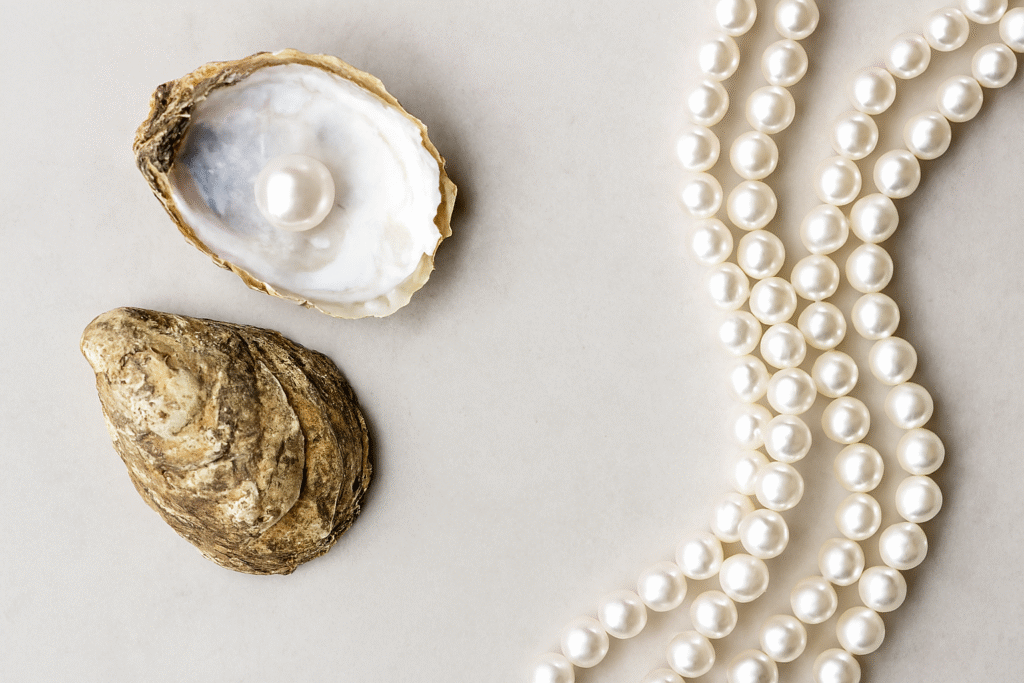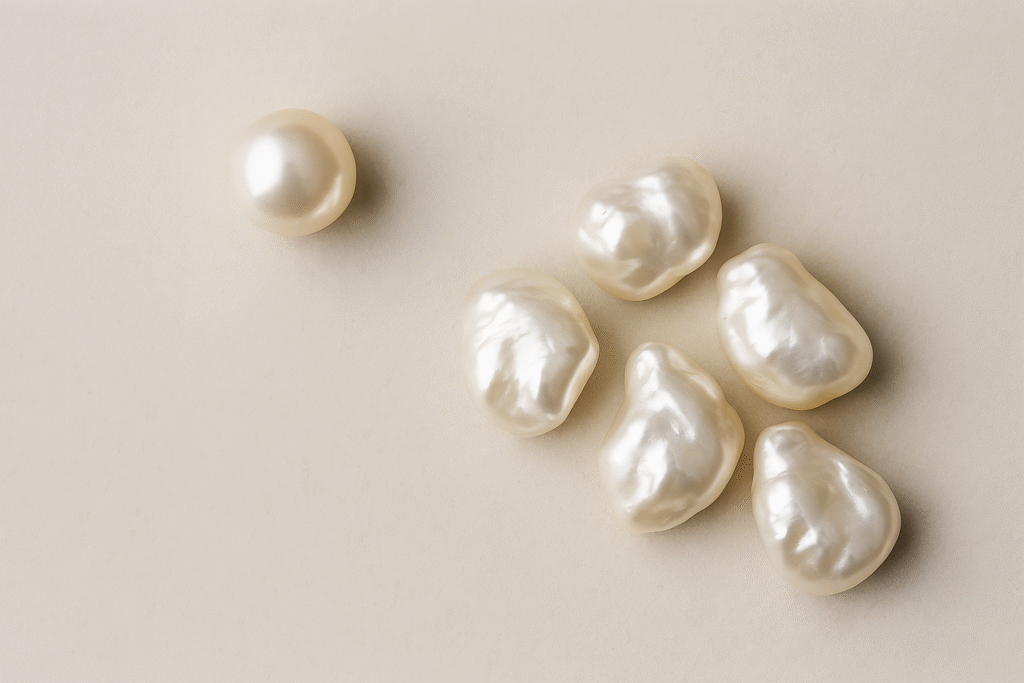Buying pearls online can be tricky. One of the most common mistakes buyers make is trusting a single, blurry product photo. Pearls are unique gems, and no two strands look the same. If you shop without enough details, you risk overpaying or receiving poor-quality pearls.
Why a Single Photo is Risky
- A blurry image hides blemishes and luster differences.
- You can’t judge surface quality or nacre thickness.
- Lighting tricks may misrepresent size and color.
- Without comparison shots, scale is misleading.
Research shows that over 70% of jewelry returns in e-commerce are due to misrepresentation of product photos. The key is to demand multiple angles and high-resolution close-ups.
How to Buy Pearls Online Safely
- Look for sellers offering at least 5–7 clear photos from different angles.
- Ask for a short video clip showing luster under natural light.
- Read a detailed product description covering size, origin, nacre thickness, and surface grade.
- Check for a transparent return policy with at least 7–14 days.
- Buy from reputable sellers with customer reviews and recognized memberships (e.g., Jewelers of America, GIA alumni).
Expert Tip
“The key is to never buy pearls online unless you can see how they reflect light. A high-luster pearl will show sharp reflections, even in photos.”
Q&A: Buying Pearls Online
Q: Can I trust stock photos of pearls?
A: No. Stock photos are generic and don’t represent the exact strand you’ll receive.
Q: What should a return policy include?
A: Clear instructions, free or low-cost returns, and no hidden restocking fees.
Q: How do I verify authenticity?
A: Look for certification, seller reputation, and ask for origin details (Akoya, Tahitian, South Sea, or Freshwater).
Case Example
A buyer in New York ordered a $500 strand based on one photo. The pearls arrived dull, off-round, and mismatched. After returning them, the buyer purchased from a GIA-trained seller who provided videos and detailed grading. The difference was clear: the second strand had 90% higher luster and matched size within 0.5 mm.
Learn more about grading pearls by luster and surface before making a purchase.
Compare pearls with gold jewelry buying mistakes to avoid.
Guide on hallmarking standards in jewelry for additional insights.
If you’re shopping in New York, read about certified diamond buying tips in NYC.
Introduction
This comprehensive Watch Buying Guide answers the most common questions about timepieces.
Whether you’re purchasing your first watch or adding to your collection, these expert insights help you make informed decisions.
From understanding movement types to choosing the right size for your wrist, you’ll find everything needed before making a purchase.
What Types of Watches Should You Consider? – Watch Buying Guide Insights
Understanding the five main categories helps narrow your options:
- Mechanical watches – Use springs and gears. No battery needed.
- Quartz watches – Battery-powered; most accurate.
- Automatic watches – Wind themselves from wrist movement.
- Digital watches – Display time numerically on a screen.
- Smartwatches – Connect to your phone and track fitness data.
Accuracy Expectations – Watch Buying Guide Tips
- Quartz watches – Lose about 15 seconds per month.
- Mechanical watches – Lose 20–40 seconds per day.
- Atomic watches – Lose 1 second every 100 million years.
- Your phone’s clock stays perfectly accurate.
Water Resistance Considerations
Water resistance ratings affect usage scenarios:
- 30m – Handles rain and handwashing
- 50m – Safe for swimming
- 100m – Suitable for snorkeling
- 200m+ – Scuba diving
Replace gaskets every 2–3 years to maintain resistance.
Maintenance Schedule – Watch Buying Guide Advice
- Quartz watches – Battery replacement every 1–3 years.
- Mechanical watches – Full service every 3–5 years.
- Service costs: $200–800 depending on the brand.
Watch for stopping, running fast/slow, or condensation under the crystal.
Pricing Strategy
- Budget watches – Plastic cases, basic movements
- Mid-range watches – Steel cases, reliable mechanisms
- Luxury watches – Precious metals, hand-finished details
Remember: craftsmanship, materials, and brand prestige drive prices.
Sizing Advice
- 6–7 inch wrists – 38–42mm
- 7–8 inch wrists – 40–44mm
- 8+ inch wrists – 42–46mm
Ensure lugs don’t overhang wrist edges.
Complications to Prioritize
- Date display – Useful daily
- GMT hand – Second time zone
- Chronograph – Stopwatch
- Moon phase – Decorative
- Annual calendar – Adjusts month lengths
More complications = more things that can break.
Maintenance Tips
- Clean with a soft cloth
- Avoid extreme temperatures & magnets
- Wind manual watches daily
- Use watch winders for automatics
- Don’t adjust date between 9 PM–3 AM
Investment Potential
- Most watches lose value after purchase
- Only select Rolex, Patek Philippe, Audemars Piguet models appreciate
- Vintage watches from 1960s–70s show strong growth
- Buy watches you enjoy wearing, not solely for investment
Essential Tools
- Spring bar tool
- Case back opener
- Soft polishing cloth
- Watch cushion
- Demagnetizer
Where to Purchase
- Online – Better selection, often cheaper
- Physical stores – Try before buying
- Authorized dealers – Full warranties
- Grey market – Discounts, limited warranty
- Forums/eBay – Vintage pieces, verify authenticity
Learn More:



